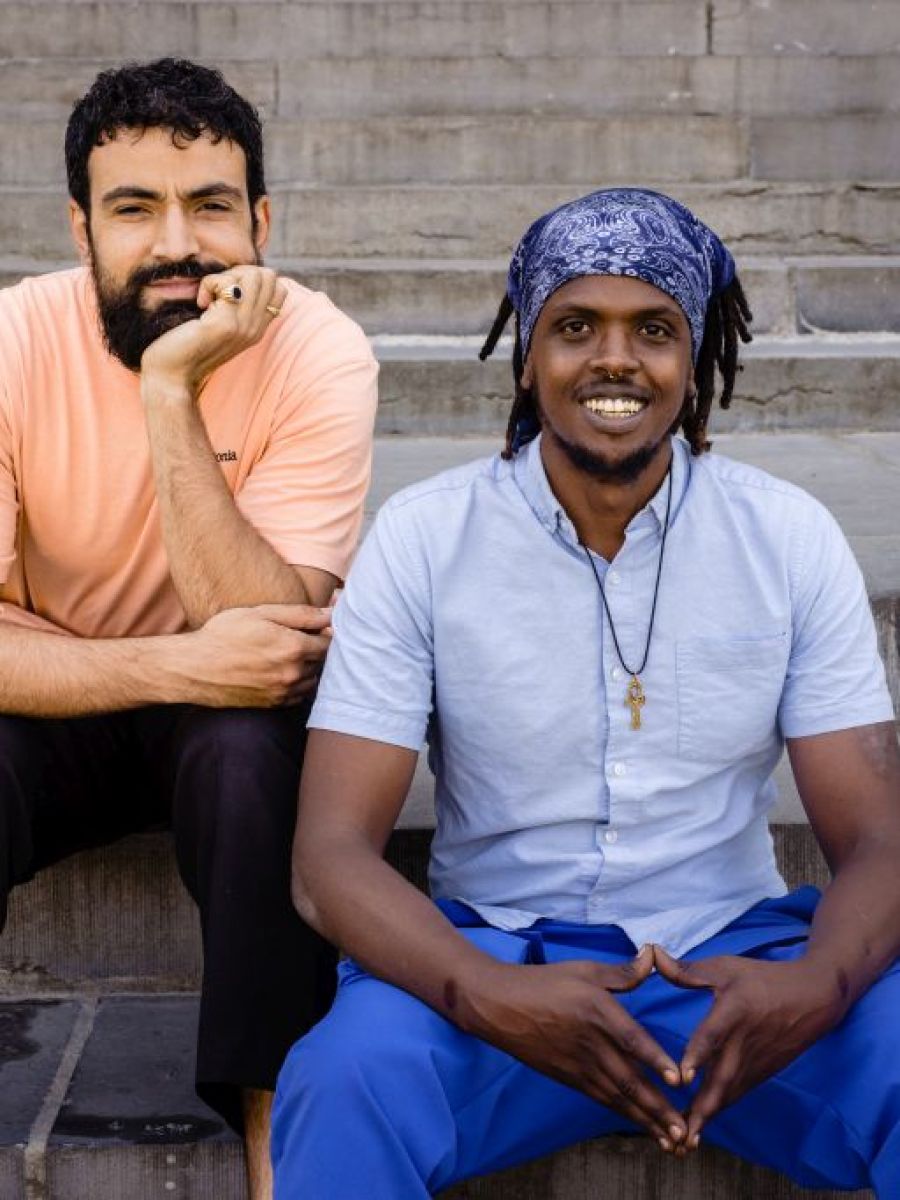'De Trappen': Young people and 'The missing link'

With "De Trappen" project, KMSKA opens its stairs and doors. Young people come into contact with the building, museum operations and collection through active art experiences. With The Stairs, the KMSKA is taking an important step towards becoming a more inclusive museum. Project officers Ali Abdi Aynaanshe and Youssef Lamrabat want to make the museum a dynamic place where young people feel welcome.
By An Van Hertum
What is ‘De Trappen’?
Youssef Lamrabat:' ‘De Trappen' is KMSKA's new youth operation. What we're going to do is lower the threshold - literally the stairs, which connect the museum to the street and the city of Antwerp - a bit. In this way, we invite young people from vulnerable situations to come to the museum and create new hobbies and habits.'
Do young people need to visit the museum?
Youssef: ‘Many young people don't realise it themselves, but visiting a museum is good for mental health, just like a walk in the woods. I am sure that if you ‘stick’ young people in the museum for an hour or two, they will feel better after those two hours.'
Ali: ‘The young people can create art and work on their competences. We offer them space, materials and guidance in a safe environment. I think this is a win-win, both for the museum and for the young people. It's about the feeling of being welcome. Now people often think ‘The museum is not for us’. We want to be their ‘missing link’, make the museum ‘safe’ for those young people.'

Left: Youssef, right: Ali - Photos: Sanne De Block
How do you create that ‘missing link’?
Ali: ‘We work with music, dance, theatre or poetry so that young people can experience the art. At first sight, ‘classical art’ is boring for them, but this way you transform it into their world. You have to create together, like making music by Ensor, making a theatre piece about Madonna or Cleopatra.'
What are your first actions?
Youssef: ‘We respond to the permanent operation because the museum already does a lot. We are trying to put a little rejuvenation into it. In summer, artists like KMSKA-Artist in Residence IKRAAAN give workshops. She approaches art as healing therapy and is someone young people in vulnerable situations can identify with.'
What are you doing with all these creative expressions?
Youssef: ‘From September, we will organise Trapsessions, where young people can have their voices heard on the museum steps. This will be programmed by the young people themselves and should be very accessible.'
Ali: ‘The young people we work with often have mental problems and traumas, so that safe environment is very important. For young people, art is a way of dealing with all emotions, both positive and negative. We are happy to guide them in this.'
ZAAL Z
This article is a preview of a longer interview in the September issue of ZAAL Z (in Dutch). Receive the museum in your mailbox?



